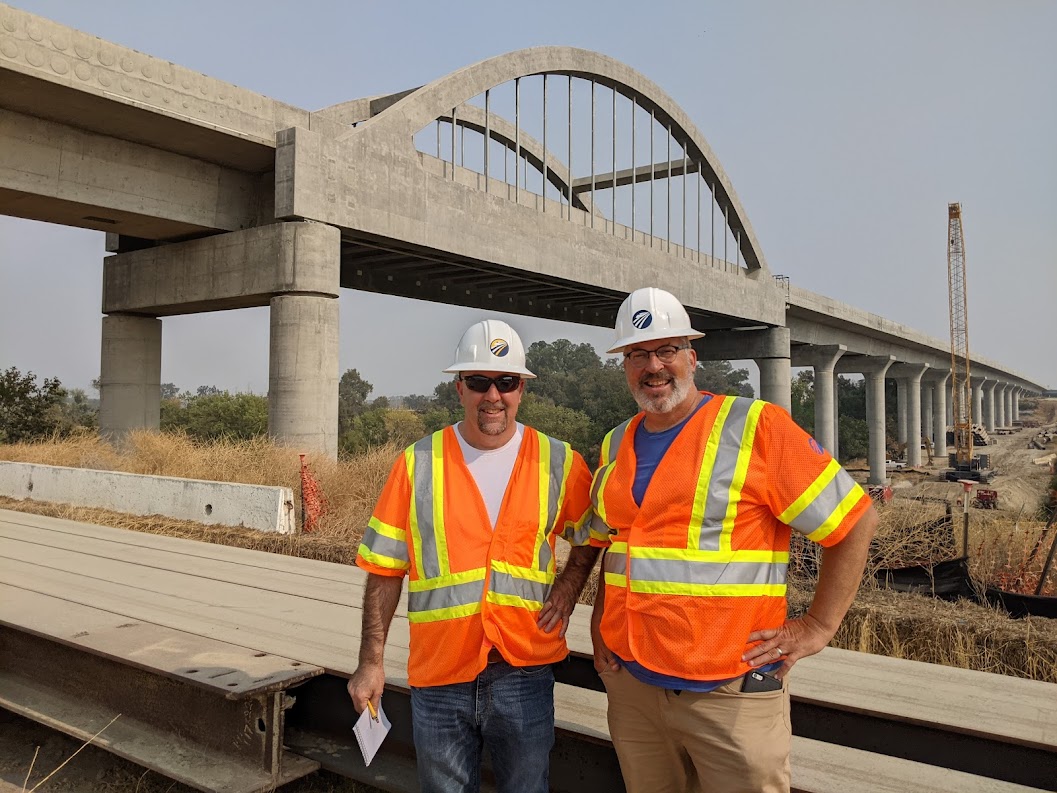Note: GJEL Accident Attorneys regularly sponsors coverage on Streetsblog San Francisco and Streetsblog California. Unless noted in the story, GJEL Accident Attorneys is not consulted for the content or editorial direction of the sponsored content.
Joe Linton, my counterpart at Streetsblog Los Angeles, and I met up on Monday in Fresno to tour some of the major construction sites in the Central Valley that are part of California High-Speed Rail's 119-mile, well-under-construction spine.
Be sure to check out our coverage, but there are huge and dramatic bridges, flyovers, and viaducts up and down the Central Valley now. It was the first time I'd toured the alignment in the center of our state since 2012, before I even started as editor of Streetsblog San Francisco. Back then, I was doing a piece for California's PBS affiliates on the project, when there was nothing to see but a few protest signs on people's lawns.
I thought it might help Streetsblog readers get a sense of how far things have come to see the piece I produced and compare it with our photo essay of this week's trip. Of course, one thing hasn't changed: the politics and misinformation, which will seem very familiar to anyone who has followed the events closely over the years.
Here is "Split Rail," produced soon after the Transbay Transit Center broke ground:
I've also seen, since I lived in Europe in the early 1990s and I was an exchange student in France in the late 1980s, what will happen when the line is finished and service begins. In the European case, high-speed networks grew from a seed--a segment of high-speed track in France's "Central Valley" between Paris and Lyon--to a massive system connecting every medium-to-large city on the continent (and off the continent, with the completion of the English Channel tunnel). High-speed rail alters how people judge distances and how they view travel, so that someday a quick trip to the Bay, Los Angeles, Fresno, Vegas, or wherever, won't be much different than taking a Metrolink or Caltrain ride into the suburbs. I look forward to watching that transformation repeat itself after the initial phases start running and high-speed rail starts changing how people get around in California.
Stay tuned for that.
Meanwhile, to get a sense of how that worked in France, here's a short documentary about how it all began (with due credit to the Japanese, the inventors of modern high-speed rail). It also underscores how incredibly far behind we are compared to France and pretty much any other developed nation when it comes to transportation. That's why it's so expensive and so painstaking: California is making up for decades of neglect. Fortunately, the effort to transform and catch up is now visible throughout the Central Valley.





